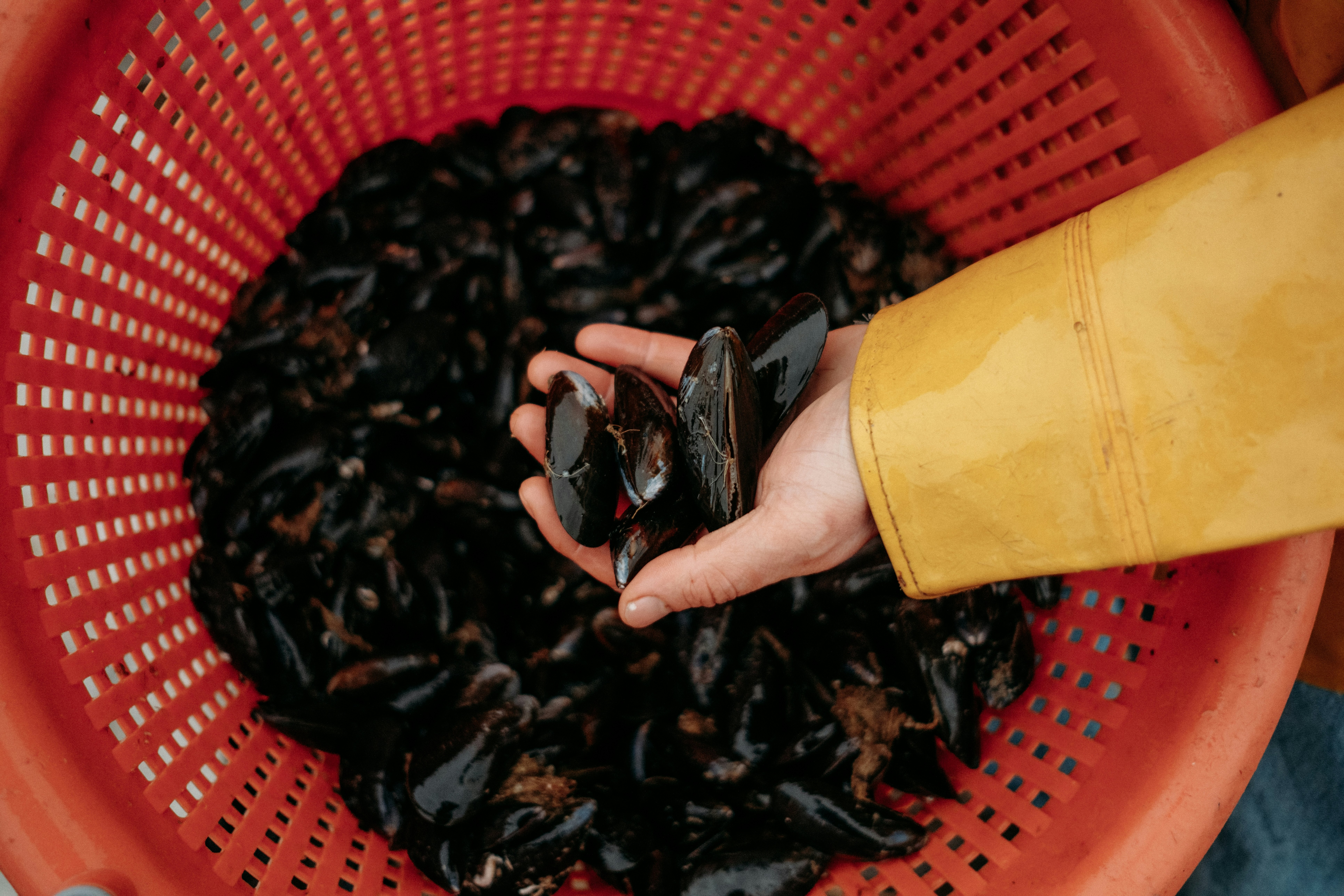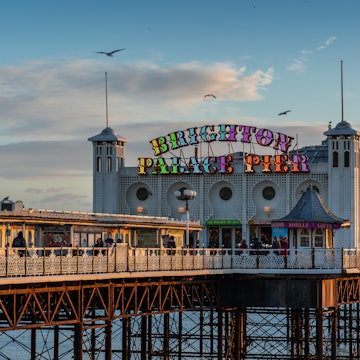
What to eat and drink in Cornwall, England



The fishing port of the village Polperro in Cornwall. RnDmS/Shutterstock
One of Britain’s best culinary destinations, Cornwall is famous for its strong focus on slow, sustainable, seasonal and local food.
With the possible exception of the weather, there’s little that Brits love discussing more than food – and if there’s a chance to adamantly (but good-humoredly) argue the side of a debate, all the better.
In England’s southwest, the best topics for a little foodie banter are pasties (who invented them, whose are better and where the crimped edge should be); and cream teas (who invented them, and the correct order to apply the jam and cream).
But there is more to eating your way around Cornwall than scones and Cornish pasties. Bustling harbors and a thriving fishing industry deliver excellent seafood. And around 70% of Cornwall is farmland, meaning access to ultra-fresh, seasonal produce. These factors are reflected everywhere from Michelin-starred fine dining to humble beach shacks.
The region is also awash with small-batch spirits distilleries, craft breweries and artisanal sauce makers – not to mention fantastic farm shops selling it all. On your next trip, be sure to pack a healthy appetite to tuck into the culinary delights of Cornwall.

What you need to know about the Cornish pasty
First, you’ll never hear it called a “Cornish pasty” in Cornwall. It’s just pasty, plain and simple. This handheld, semi-circular pastry filled with meat and vegetables is a local icon. And while hundreds of variations and fillings exist, there’s only one true Cornish pasty.
A traditional pasty is filled with beef, swede (turnip to the Cornish), onion, potato and seasoning (mainly salt and pepper). If it’s not beef, or there are other vegetables present, then what you’re holding is not a proper Cornish pasty; at least not since they were granted Protected Geographical Indication (PGI) status by the EU in 2011. Only pasties made in Cornwall according to the above recipe – containing at least 12.5% beef and 25% vegetables – can officially be called Cornish pasties.
One more element makes a pasty Cornish: the crimped edge. The pastry can be shortcrust, rough-puff or puff, but it needs to be assembled in the classic D-shape then crimped along the curved side. Some local bakers prefer “over-the-top” crimping – but according to both the Cornish Pasty Association (CPA) and the PGI specification, if it ain’t side-crimped, it ain’t Cornish.
Alternative fillings you might find in a Cornish pasty
Most bakeries also offer a slew of alternative fillings including vegetarian and even vegan options. After the traditional ingredients, cheese and onion are probably the most popular next options, but there are often quirkier offerings – such as chicken curry or cauliflower cheese.
Who invented the Cornish pasty?
Pasties are thought to date back to at least the 14th century, but it was Cornwall’s 19th-century tin miners who shaped the snack as we know it today. Pasties were filling, cheap to make, and stayed hot for a long time: an ideal lunch for miners working down a shaft. It’s thought that the classic D-shape originated so that miners could hold the crust with dirty hands. And when Cornish miners emigrated to the Americas and Australia, they took pasties with them, helping popularize the snack around the world.
Where to find the best pasties in Cornwall
Gear Farm: Reckoned by many Cornish folk to make the perfect pasty: delicious, small-batch and homemade using ingredients grown on the farm near Helston.
Ann’s Pasties: Ann Muller has built a big reputation on her traditional pasties, which come in meat, cheese and vegan versions.
Philps: A classic locals’ choice in Hayle, this family-run business began selling their homemade pasties out of the Cornish Arms pub in the 1950s.
Chough Bakery: A family-run Padstow institution serving up award-winning pasties crafted with local ingredients.
Over the Top Pasties: Traditional pasties delivered to your door to bake at home – perfect for a picnic.

The land of the the celebrity chef
In 1975, TV chef Rick Stein opened the Seafood Restaurant in Padstow. Today, he owns four eateries in the quaint Cornish village, and has become so synonymous with the culinary landscape that locals have nicknamed the place “Padstein.” While that’s not meant particularly flatteringly, Stein’s restaurants and TV shows have done much to put Cornish cuisine in the national spotlight.
One of his protégés, Nathan Outlaw, is responsible for two of the four Michelin-starred restaurants in Cornwall. Across the border in east Devon, Hugh Fearnley-Whittingstall’s River Cottage – star of the TV series of the same name – has long advocated seasonal, farm-to-table dining. And throughout both counties, renowned chefs like Paul Ainsworth in Cornwall, and Mitch Tonks and Michael Caines in Devon, are continuing the local food movement and drawing Brits to this corner of the country for a meal of a lifetime.
Taste the local tipples
Cider – along with its stronger, cloudier cousin, scrumpy – is the iconic drink of the southwest, with producers big and small located across Cornwall. More recently, the mild southwest climate has been put to use nurturing grape vines to produce some excellent sparkling wines, with some vineyards also producing whites and even reds.
Near Padstow, head to Trevibban Mill, a vineyard and cider orchard established in 2008 by Engin and Liz Mumcuoglu. Here, you can take a tour, or book in for a wine or cider tasting. Alternatively, relax on the viewing balcony with a sharing platter and a glass of still or sparkling wine or cider.
Located just outside Penzance, Polgoon is earning a sparkling reputation for its rosés and whites, which come in both still and bubbly varieties. It also makes cider and juices from the orchard. Tours are offered year-round – and of course you get to taste the latest vintages. And the award-winning Camel Valley at Bodmin offers pre-bookable winery tours.

More foods worth trying in Cornwall
Clotted cream: Thick, decadent and a key component of cream tea. Made by heating cream until a crust forms on top.
Cornish blue: A mild, creamy and gently sweet blue cheese from the edge of Bodmin Moor.
Cornish yarg: Nettle-wrapped, semi-hard and slightly tangy cheese.
Cream tea:Traditional, round scones are made with leavened flour or oatmeal and served with jam, clotted cream and tea.
Hog’s pudding: Sausage made with pork, suet, oatmeal and sometimes offal.
Marsh samphire: A coastal plant with a salty flavour, often partnered with seafood.
Pilchards: Once a vital industry, they’re now being rebranded as “Cornish sardines.”
Saffron cake:Sweet, yeasted bun flavoured with saffron with dried fruit added.
Sharpham brie: Sweet, soft brie made with Jersey cow's milk.
Shellfish: You’ll find superb oysters, mussels, scallops, crab and lobster are all caught locally.
Stargazey pie: A baked disg of pilchards, eggs and potatoes with the fish heads protruding through the pastry lid.
Where to enjoy a meal of a lifetime in Cornwall
Outlaw’s Fish Kitchen: The menu at this Michelin-starred Port Isaac restaurant changes daily according to seasons, weather and the day’s catch.
Coombeshead Farm: For the ultimate field-to-fork experience with hyper-seasonal menus in a working farm's rustic barn conversion.
Paul Ainsworth at No 6: This stylish Michelin-starred restaurant in Padstow focuses on Cornish seafood.
Captain Hanks: Iconic vintage van seafood shack on the River Fowey in South Cornwall.
Vegetarians and vegans
Seafood is one of the main staples of the Cornish dining scene, but this doesn’t mean that vegetarians and vegans are neglected.
As well as a handful of vegan restaurants dotted around the region, you’ll find at least one item on menus at most venues that is at least vegetarian-friendly (and you can ask for easy substitutes at more-accommodating restaurants and cafes). Plan your vegan and vegetarian dining out with the locally informed Cornwall Vegan Guide, or search the Happy Cow website and app.
Vegan and vegetarian Cornish pasties can be found in Penzance at Lavendars deli and Ann’s Pasties on the Lizard Peninsula, among other spots.
Self-catering is good option, with plenty of farm shops providing the freshest of ingredients. Be mindful that in very busy areas, stock can run low in the summer peak, and that many stores might close earlier than you may expect (and some won’t open on Sundays).

A year in food in Cornwall
Spring
In April, the Porthleven Food Festival is a three-day harborside feast of local food and drink in one of Cornwall’s top foodie destinations. Salty samphire comes into season in May; look for it in fish dishes. Lamb is the meat of spring, often partnered with new potatoes and asparagus. For dessert, there’s a British classic: rhubarb and custard.
Summer
Head to a “pick your own” farm for raspberries, strawberries and cherries. Lobster and brown crabs are in season during summer, while salad leaves, radishes, peas and mint mean lots of fresh, light dishes. For a taste of rural life head to the June Royal Cornwall Show.
Autumn
The Falmouth Oyster Festival in October celebrates the start of the oyster-dredging season (the bivalves are protected during summer when they spawn). Inland, this is the time for richly flavored vegetables like mushrooms, squashes and leeks, and for cider-apple harvesting.
Winter
On cold winter days, Britain’s hearty, heavy dishes shine – especially the classic roast dinner. Some pubs and restaurants make good use of the autumn-winter game season, so look out for pheasant, rabbit and venison on winter menus.
This article was adapted from Lonely Planet’s Devon and Cornwall guidebook, published in June 2025.















